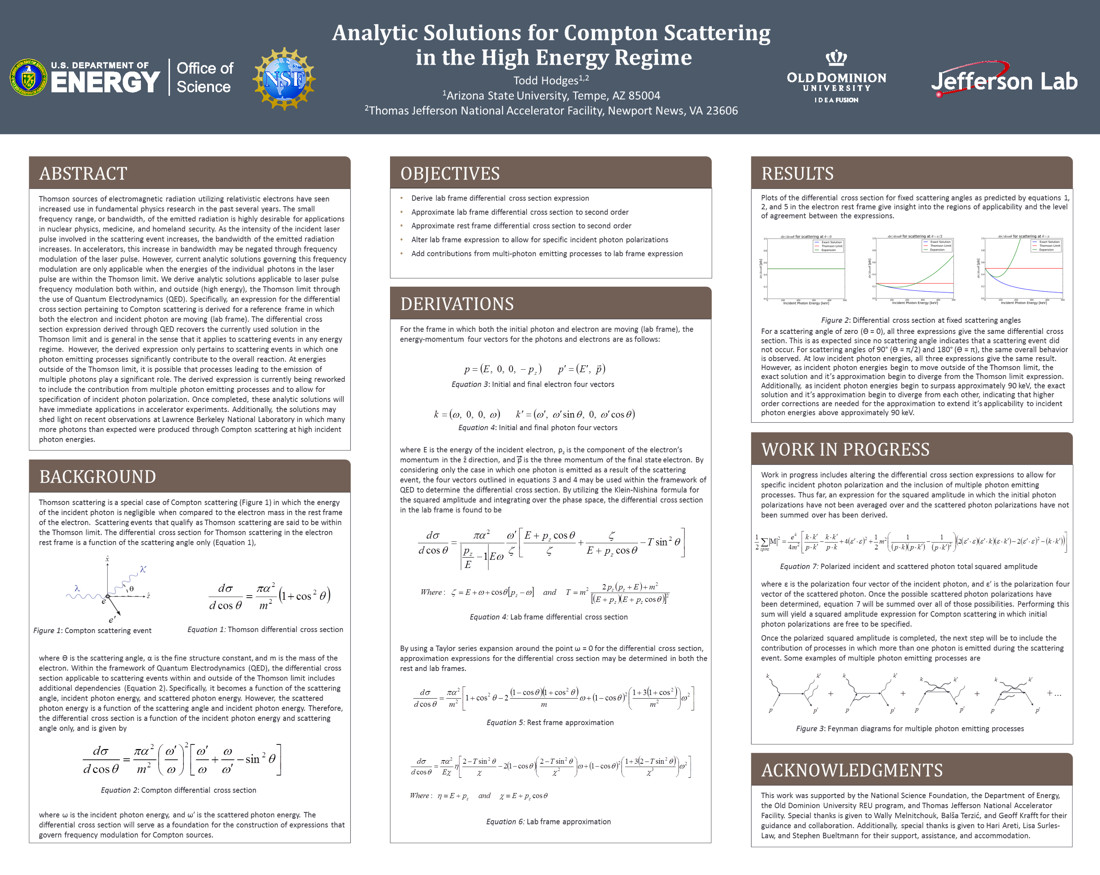Undergraduate Research at Jefferson Lab
Analytic Solutions for Compton Scattering in the High Energy Regime
Student: Todd Hodges
School: Arizona State University
Mentored By: Wally Melnitchouk
Thomson sources of electromagnetic radiation utilizing relativistic electrons have seen increased use in fundamental physics research in the past several years. The small frequency range, or bandwidth, of the emitted radiation is highly desirable for applications in nuclear physics, medicine, and homeland security. As the intensity of the incident laser pulse involved in the scattering event increases, the bandwidth of the emitted radiation increases. In accelerators, this increase in bandwidth may be negated through frequency modulation of the laser pulse. However, current analytic solutions governing this frequency modulation are only applicable when the energies of the individual photons in the laser pulse are within the Thomson limit. We derive analytic solutions applicable to laser pulse frequency modulation both within, and outside, the Thomson limit through the use of Quantum Electrodynamics (QED). Specifically, an expression for the differential cross section pertaining to Compton scattering is derived for a reference frame in which both the electron and incident photon are moving. Additionally, an approximation for the differential cross section is derived including first and second order corrections. Progress towards altering the derived expression to include the contribution from multiple photon emitting processes and allowance for specification of incident photon polarization is discussed.

Citation and linking information
For questions about this page, please contact Education Web Administrator.
